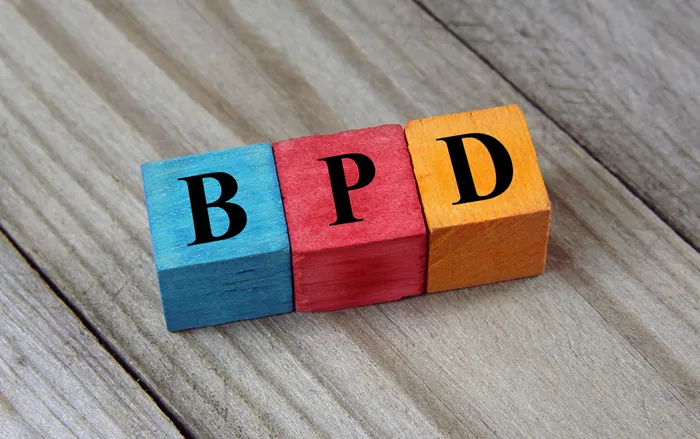Attention-deficit hyperactivity disorder (ADHD) and borderline personality disorder (BPD) are both complex mental health conditions that affect individuals in different ways. While they are distinct disorders, there are some similarities in symptoms, which has led to questions about whether ADHD can contribute to the development of borderline personality disorder. In this article, we will explore the relationship between ADHD and BPD, looking at how these disorders overlap and whether one can lead to the other.
What Is ADHD?
Attention-deficit hyperactivity disorder (ADHD) is a neurodevelopmental disorder that affects both children and adults. It is characterized by symptoms of inattention, hyperactivity, and impulsivity that can impair daily functioning. Individuals with ADHD may struggle with tasks that require sustained attention, organization, and impulse control. ADHD is commonly diagnosed in childhood, though symptoms can continue into adulthood.
What Is Borderline Personality Disorder (BPD)?
Borderline personality disorder (BPD) is a mental health condition that involves intense emotional experiences and difficulty managing interpersonal relationships. People with BPD often experience rapid mood swings, fear of abandonment, and impulsive behaviors. They may have difficulty maintaining stable relationships and tend to view themselves and others in extreme, black-and-white terms. BPD is considered a personality disorder, meaning it involves patterns of thought, behavior, and emotions that persist over time and affect a person’s ability to function in different areas of life.
Core Symptoms of ADHD and BPD
ADHD and BPD have some overlapping symptoms, which can make distinguishing between the two challenging. For example, both disorders involve impulsivity, emotional dysregulation, and difficulty with self-control. However, the way these symptoms manifest and the underlying causes differ.
ADHD and Emotional Dysregulation
Emotional dysregulation is a key feature of both ADHD and BPD. Individuals with ADHD often struggle with managing their emotions, particularly in situations that require patience or attention. This can lead to outbursts of frustration, anger, or anxiety, which may resemble some of the emotional instability seen in BPD. However, in ADHD, these emotional challenges are typically tied to attention and focus issues, rather than the intense, persistent fear of abandonment or identity disturbance seen in BPD.
Impulsivity and Risk-Taking Behaviors
Impulsivity is another symptom shared by ADHD and BPD. People with ADHD often make hasty decisions without thinking about the consequences, which can lead to risky behaviors, such as substance abuse, unsafe driving, or poor financial decisions. In BPD, impulsivity is often linked to attempts to cope with emotional distress or to prevent feelings of abandonment. Although impulsivity in both disorders can lead to similar outcomes, the motivations behind these behaviors are different.
Can ADHD Lead to Borderline Personality Disorder?
While ADHD and BPD share some symptoms, there is no clear evidence to suggest that ADHD directly causes borderline personality disorder. However, it is possible for someone with ADHD to develop BPD, especially if other risk factors are present. For example, individuals with ADHD may struggle with emotional regulation and interpersonal relationships, which can lead to patterns of behavior that resemble BPD. Additionally, untreated ADHD in childhood can contribute to frustration, low self-esteem, and feelings of inadequacy, which may increase vulnerability to developing other mental health issues, including BPD.
Risk Factors for Developing BPD in Individuals with ADHD
Several factors could contribute to the development of borderline personality disorder in individuals with ADHD. These factors include:
- Childhood trauma: Experiencing abuse or neglect during childhood is a significant risk factor for developing BPD. Children with ADHD who face trauma may have a higher likelihood of developing emotional dysregulation and impulsivity, traits common in BPD.
- Co-occurring mental health conditions: ADHD often co-occurs with other mental health disorders, such as anxiety, depression, or mood disorders. These conditions can increase the risk of developing BPD in individuals with ADHD.
- Genetic factors: Both ADHD and BPD have genetic components. A family history of either disorder may increase the likelihood of developing both.
The Role of Treatment in Managing ADHD and BPD
Effective treatment for ADHD and BPD involves addressing the symptoms of both disorders. Treatment for ADHD typically includes behavioral therapy, psychoeducation, and medication, such as stimulants or non-stimulants. For BPD, therapy is often the primary treatment, with dialectical behavior therapy (DBT) being one of the most effective approaches. DBT focuses on helping individuals manage emotional distress, improve interpersonal relationships, and regulate their emotions.
Can ADHD Treatment Help Prevent BPD?
While there is no direct evidence that treating ADHD can prevent BPD, effective treatment of ADHD symptoms may help reduce the risk of developing other mental health conditions, including BPD. Addressing emotional dysregulation, impulsivity, and attention difficulties early on can help individuals with ADHD build coping strategies and improve their emotional resilience, potentially reducing the likelihood of developing BPD.
Conclusion
While ADHD and BPD share some overlapping symptoms, there is no direct evidence to suggest that ADHD causes borderline personality disorder. However, the emotional dysregulation, impulsivity, and interpersonal difficulties associated with ADHD may increase the risk of developing BPD, especially when other risk factors are present. Early diagnosis and treatment of ADHD can help manage symptoms and improve overall functioning, potentially preventing the development of additional mental health issues, including BPD.
Related topics:
- Is ADHD A Mental Or Neurological Disorder?
- Does ADHD Lead To Bipolar Disorder?
- Is ADHD A Neurodevelopmental Disorder? Understanding The Facts


